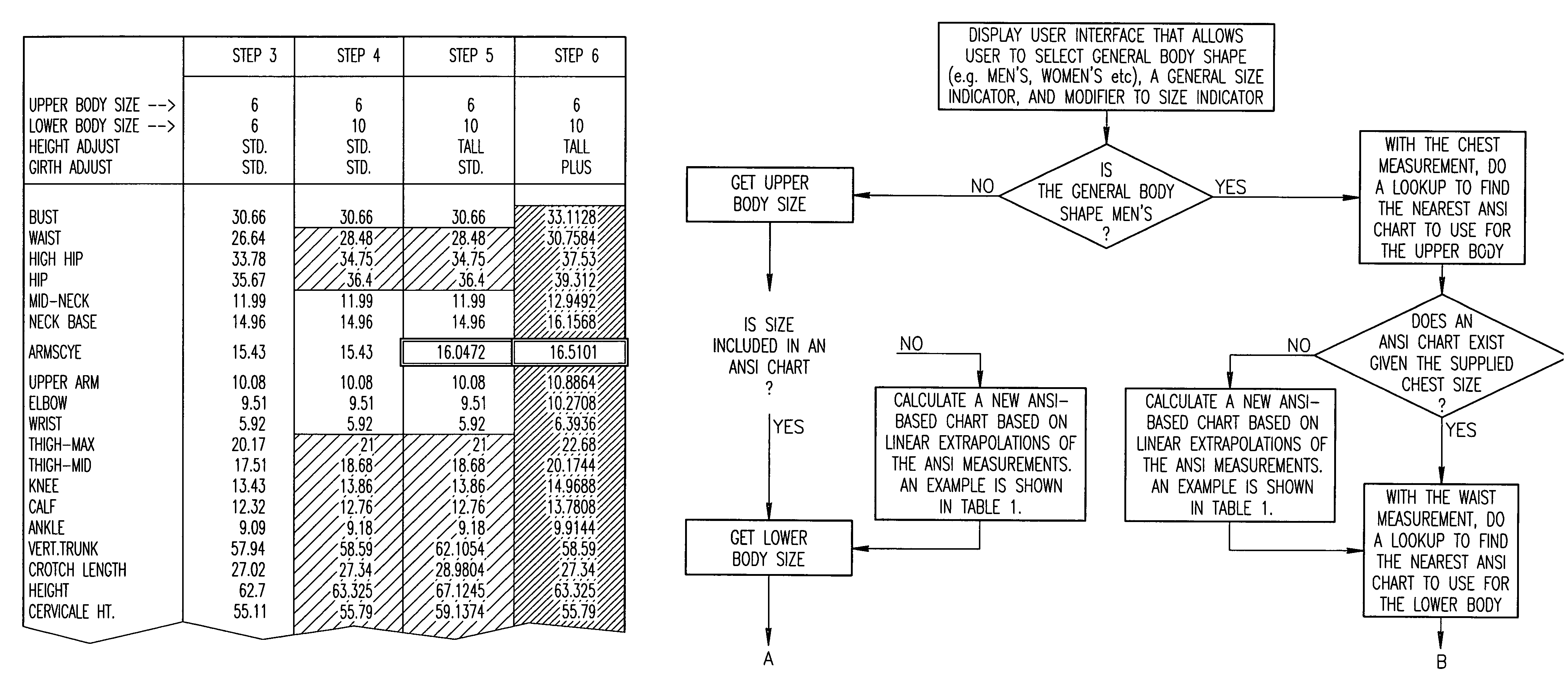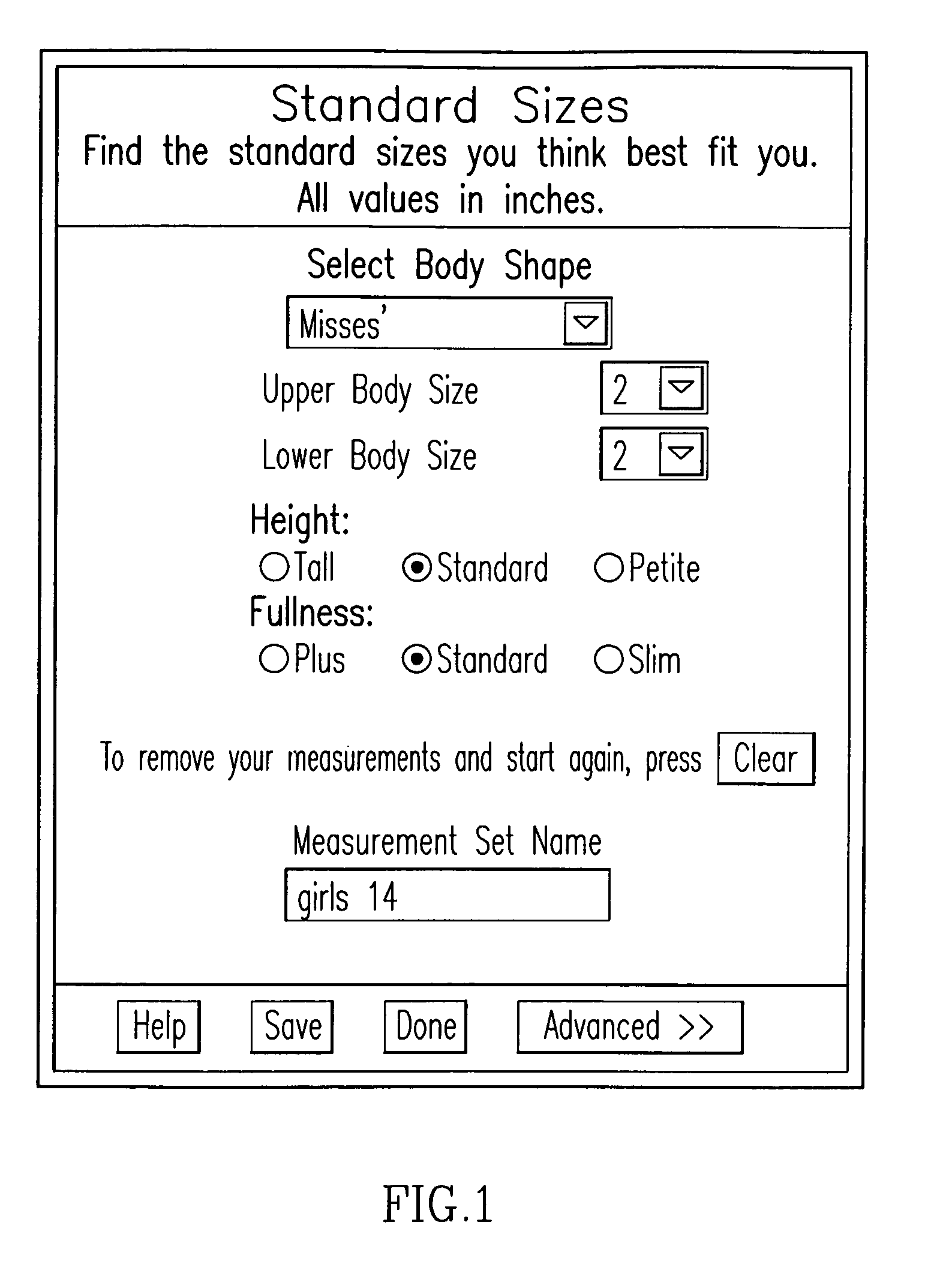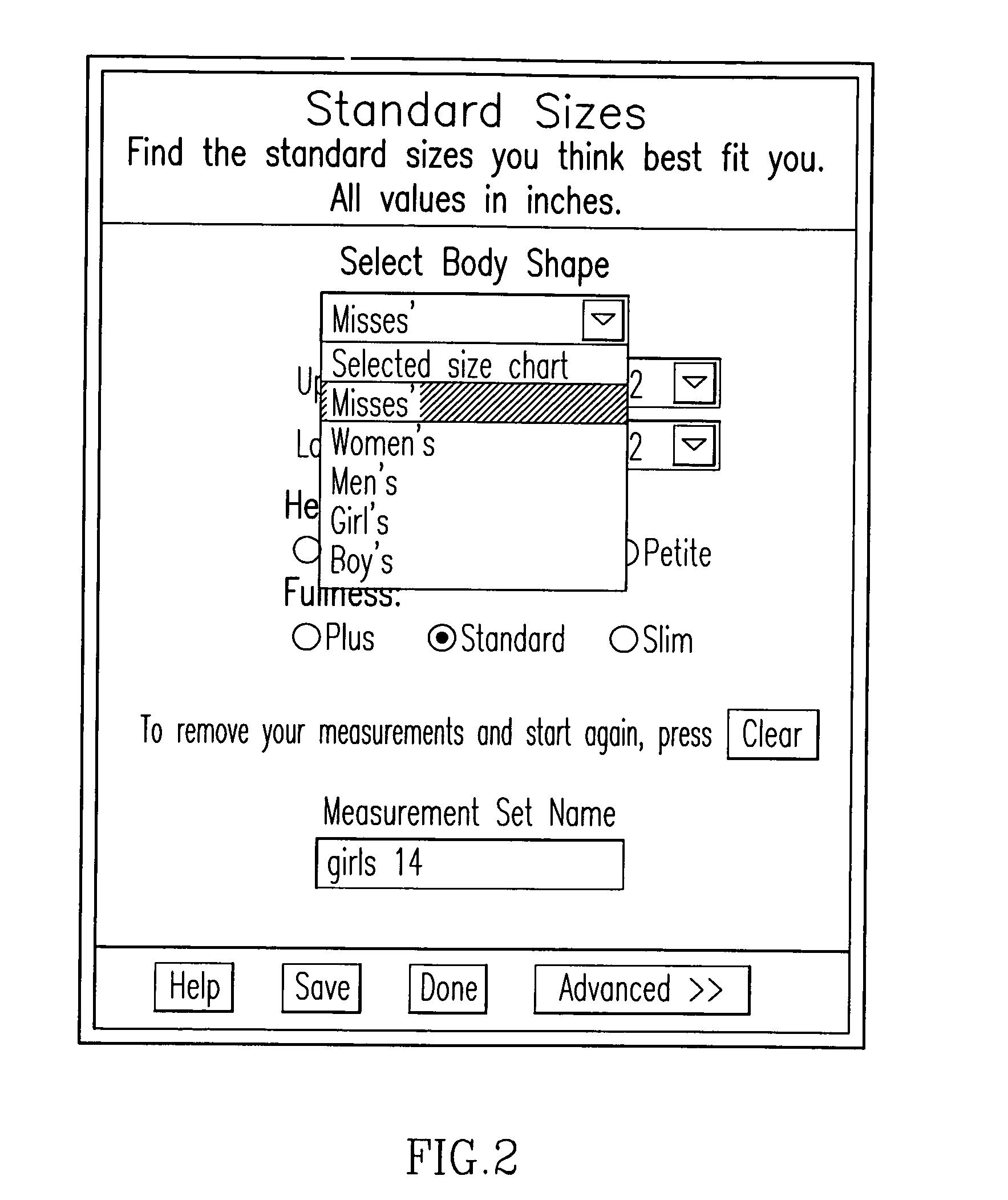Method for creation of detailed body measurement parts from extrapolation of standard chart data based on generic body attributes
a body measurement and generic technology, applied in the field of custom garments production automatic production, can solve the problems of not being able to keep up with the changing shape of the body, not being able to fully represent the broad diversity of actual body types, and not being able to create detailed body measurements
- Summary
- Abstract
- Description
- Claims
- Application Information
AI Technical Summary
Benefits of technology
Problems solved by technology
Method used
Image
Examples
example 1
[0020]FIG. 11 (Table 1) illustrates the raw data available from ANSI for women's standard body measurements. This particular chart is for women over 55, sizes 6 through. The 9 sizes available means that 9 general body shapes are covered by the ANSI charts for older women. There are similar charts for men, boys, and girls. Between them, fewer than 50 body shapes can be described reasonably accurately with these measurements.
[0021]This data was gathered over decades of research and therefore cannot accurately reflect the changing sizing standards of the current year. In recent years, body sizes have been increasing and sizes larger than 22 are now more common than when this research was done. Further, the ANSI charts make no provision for body types that are not totally top to bottom proportional. A woman with an ‘A’ body type—narrow shoulders and wider hips—cannot be served by these charts, nor could a person with a ‘V’ body shape—big shoulders, and narrow hips. And, finally, the man...
PUM
 Login to View More
Login to View More Abstract
Description
Claims
Application Information
 Login to View More
Login to View More - R&D
- Intellectual Property
- Life Sciences
- Materials
- Tech Scout
- Unparalleled Data Quality
- Higher Quality Content
- 60% Fewer Hallucinations
Browse by: Latest US Patents, China's latest patents, Technical Efficacy Thesaurus, Application Domain, Technology Topic, Popular Technical Reports.
© 2025 PatSnap. All rights reserved.Legal|Privacy policy|Modern Slavery Act Transparency Statement|Sitemap|About US| Contact US: help@patsnap.com



